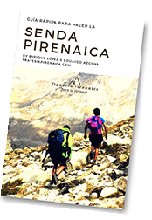What are the differences between the GR11, the High Pyrenean Route and the GR10?

The GR11, the GR10 and the ARP/HRP are three routes that cross the Pyrenees from one end to the other, linking the Cantabrian Sea with the Mediterranean Sea.
- GR11: A certified trail that runs along the southern slope, close to the summits and with a drier climate than its brothers GR10 and ARP.
- GR10: This is an approved trail that runs along the northern slope, with a greater accumulated difference in altitude and a more humid climate.
- High Pyrenean Route (ARP/HRP): This is a non-approved and unmarked route that generally runs through high mountain terrain on the northern slope. It is a little more demanding and technical than the other two.

The GR11 and GR10 have in common that they are long-distance footpaths, i.e. approved routes, marked with red and white paint on the ground, and maintained by the corresponding mountain federations. The difference between the two is that the GR10 runs along the French side (North) and the GR11 along the Spanish side (South), with very different climates and landscapes. The GR10 is further away from the Pyrenean axis but has a greater difference in altitude. The GR11 is closer to the summits and crosses higher passes.
The High Pyrenean Route is different. It is not a certified trail and it is not marked on the ground, although it was marked with yellow paint and the route is usually shown on hiking maps. The ARP runs most of the time in French territory but more in the high mountains than the GR10.
In the following drop-downs we go into detail on each of the routes:

Quick guide
GR 11
with everything you need to know before undertaking the Pyrenean Path
Don't miss any adventure in the Pyrenees!
